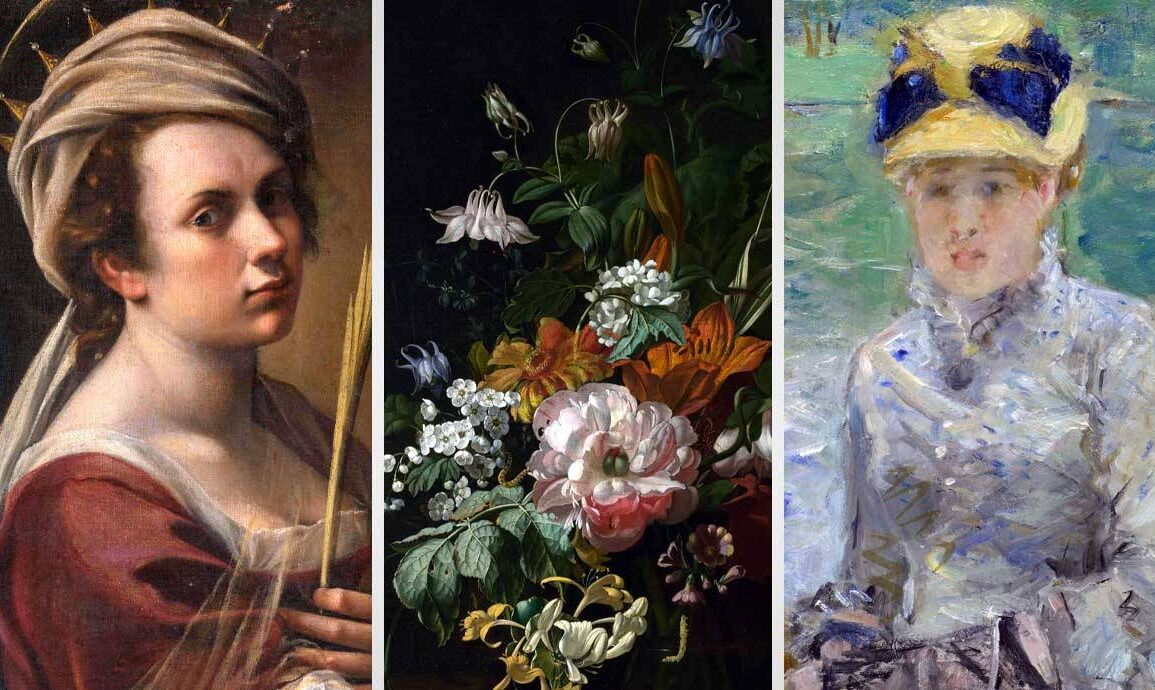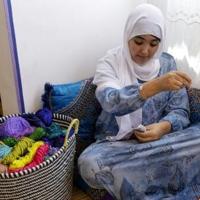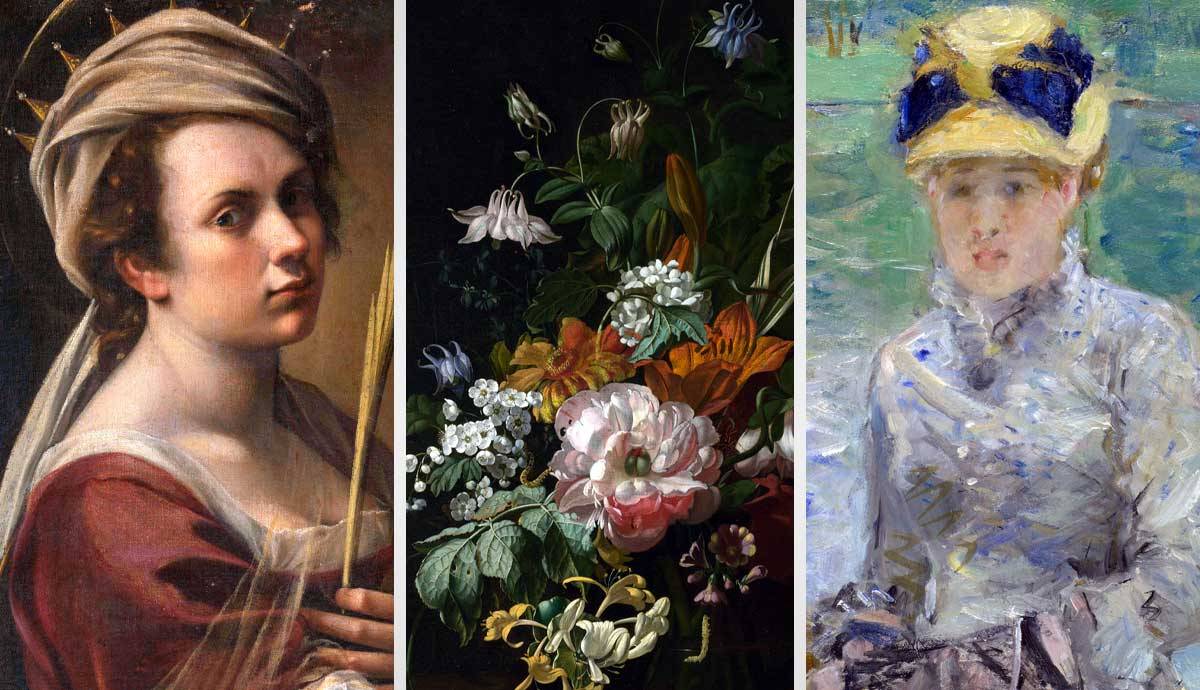
As with most major collections of art, the National Gallery’s holdings are mostly works by male artists. Historically, women were restricted from pursuing a career in art, and those who did pursue such careers have been largely overshadowed by their male counterparts. There are a few, however, who forged successful artistic careers against all odds and whose names and works live on in the history of art. Here are 8 female artists whose works you can see in the National Gallery’s collection in London.
1. Catharina van Hemessen: 16th-Century Female Artist in the National Gallery

The exact dates of Catharina van Hemessen’s birth and death are unclear, but she was likely born in 1527. She was the daughter of a painter in Antwerp. Van Hemessen’s signed works are the earliest known surviving paintings of a female Flemish painter. Although little is known about her life, it is thought that she was invited to work at the Habsburg court in Spain by Mary of Hungary in 1556. Van Hemessen specialized in small-scale portraits, mostly of women. There are eight of her surviving paintings around the world, two of which are in the collection of the National Gallery: Portrait of a Woman (1551) and Portrait of a Man (1552). In both works, she employed a similar style and technique, with the sitters assuming the same pose. Neither the woman nor the man’s identity are known but both evidently represent the wealthy part of the society.
2. Elisabeth Louise Vigée Le Brun

Elisabeth Vigée Le Brun lived through a tumultuous period in French history. She was born in Paris in 1755 as the daughter of a portrait painter, Louis Vigée. Her father died when she was twelve, so she was largely a self-taught artist. In 1774 she joined the Académie de St-Luc and became a member of the French Academy in 1783. She was one of only four women admitted to the academy in the 18th century.
Get the latest articles delivered to your inbox
Sign up to our Free Weekly Newsletter
She forged a career as a fashionable portrait painter and became one of the most successful society portraitists of her time. In the years leading up to the French Revolution, Queen Marie Antoinette became Vigée Le Brun’s patron and she found great success at the Court of Versailles. When the members of the French royal family were arrested in 1789, the artist was forced to flee Paris and she traveled through Europe for more than a decade afterward.
One of Vigée Le Brun’s most famous paintings is her Self Portrait in a Straw Hat, which she painted in Brussels in 1782. The artist painted herself in a pose modeled on Peter Paul Rubens’ Portrait of Susanna Lunden (1622-25). Le Brun had studied the works of Rubens and saw his portrait of Lunden when she was in Antwerp. Self Portrait in a Straw Hat appears informal at first look, but it is actually a highly calculated image. With her self-portrait, Vigée Le Brun associated herself with a great artist. She also depicted herself gazing out at the viewer in a self-assured manner holding the tools of her trade. In this way, she presented herself as both a society lady and a professional artist.
3. Rachel Ruysch

Rachel Ruysch was born in 1664 in the Netherlands into a distinguished and artistic family. From a young age she helped her father in his work, who was keeper of Amsterdam’s botanical garden. This experience influenced Ruysch’s decision to become a painter of still life. As a woman, Ruysch was also restricted in her artistic choices, being unable to study the male nude, which was essential to painting historical or biblical subjects. However, her first-hand knowledge of plants helped her become one of the most successful artists of her day. In fact, her paintings often fetched higher prices during her lifetime than Rembrandt’s did during his.
Ruysch trained with still-life painter Willem van Aelst and with her exceptional skill, she helped develop the genre. She became the first female member of The Hague’s Artist Society in 1701 and was the court painter in Düsseldorf from 1708 to 1716. She earned so much from her commissions that she only needed to paint a few paintings each year. Later in life, she continued to paint for pleasure and was still creating work when she was in her 80s.
Flowers in a Vase (1685) in the National Gallery’s collection is a sublime example of her work. Her compositions often include strong curves and dramatic lighting. In this example, the light falls in the bottom left corner stretching to the top right creating a diagonal axis which is another typical characteristic of her paintings. Ruysch’s light palette against a dark background creates depth and a sense of three-dimensionality, a technique that set her apart from her contemporaries.
4. Rosa Bonheur
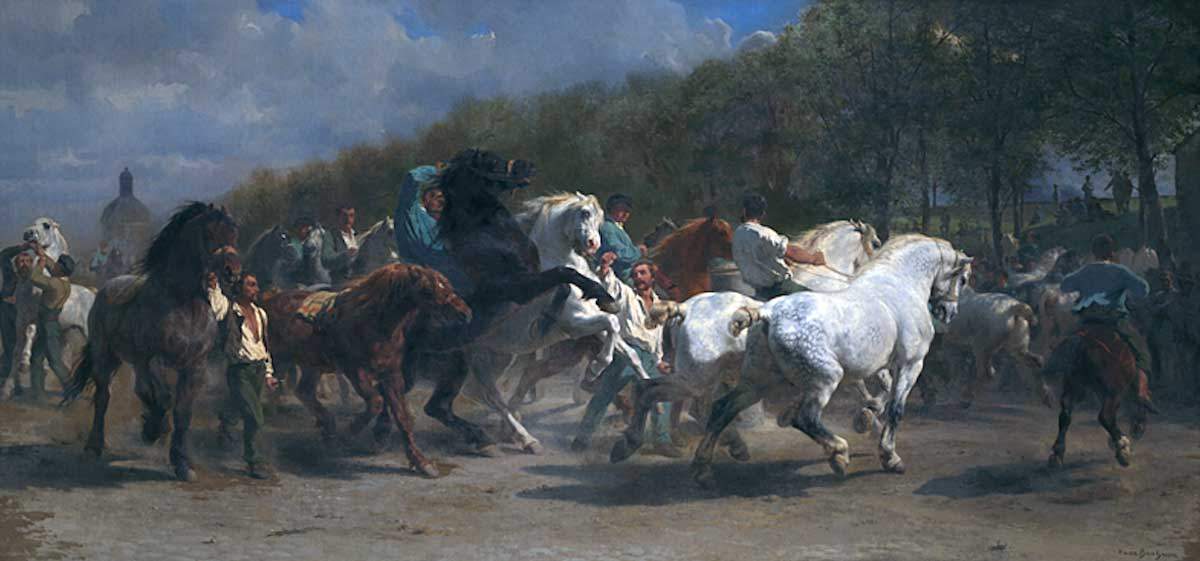
Rosa Bonheur was unconventional for her time. She lived in a way that is not considered unusual today but was almost scandalous in 19th-century France. She had short hair, she smoked, wore men’s clothing, and lived with her female companion. She was also one of the most successful women of her day.
Bonheur was born in Bordeaux in 1822 and was trained as a painter by her artist father who encouraged her talent and independence. As a gifted artist, she was successful from a young age and exhibited at the Salon when she was just 19 years old. Bonheur drew inspiration for her work from her love of animals, particularly horses. She worked from observation, spending time in nature and visiting slaughterhouses. She even dissected animals to advance her anatomical knowledge.
Her masterpiece, The Horse Fair (1853), now in the Metropolitan Museum of Art in New York, secured her international fame. The painting showed the horse market in Paris and received acclaim at the Paris Salon before touring Britain and the USA. In 1865, Bonheur became the first woman artist to be awarded the Legion of Honour.
The National Gallery’s The Horse Fair is a copy painted in 1855. Although it’s significantly smaller than the original, it is still a powerful painting. Bonheur’s understanding of animal anatomy is evident as the almost photographic reality of the horses’ muscles and flying manes brings them to life.
5. Judith Leyster
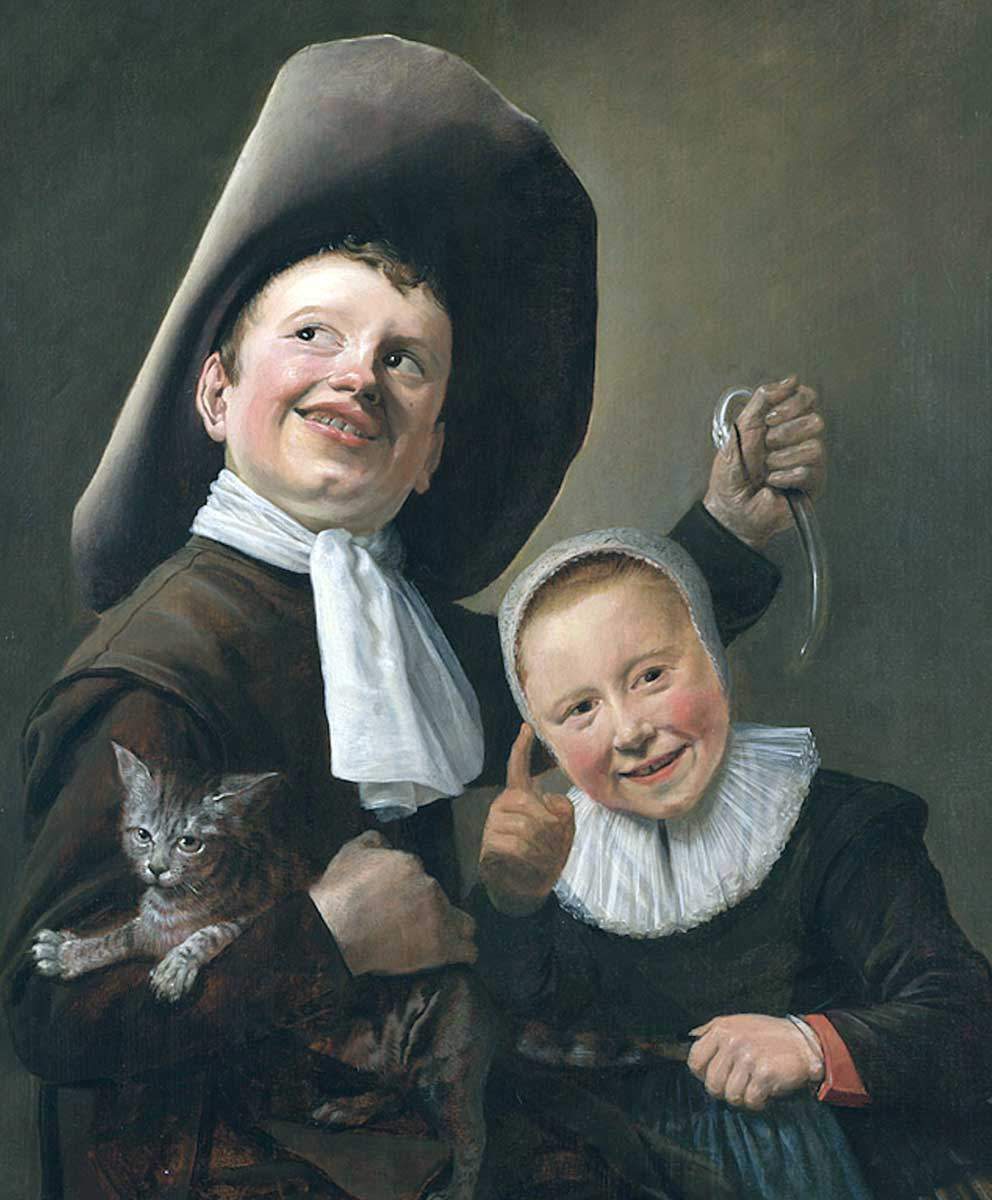
Dutch artist Judith Leyster was born in Haarlem in 1609 and was one of the few professional female artists of the Dutch Golden Age. In her early career, she was influenced by followers of Caravaggio, however, she was later a pupil of Frans Hals. She worked in Amsterdam and was a member of the Haarlem guild.
Leyster’s fame as a painter is evidenced by the fact she had three pupils in 1635. She was primarily a genre painter but she also had an interest in flower painting. The National Gallery holds an example of her genre painting A Girl and a Boy with a Cat and an Eel (c. 1635). The painting may have been influenced by the old Dutch motto: He who plays with cats gets scratched. The saying implies that he who looks for trouble will find it. Despite the apparent warning note of the painting, it is a cheerful and playful image of young children. It was common in 17th-century Dutch paintings to depict children’s activities to comment on adults’ bad behavior. In this way, Leyster’s image is both a delightful and entertaining image and a reference to morality.
6. Marie Blancour
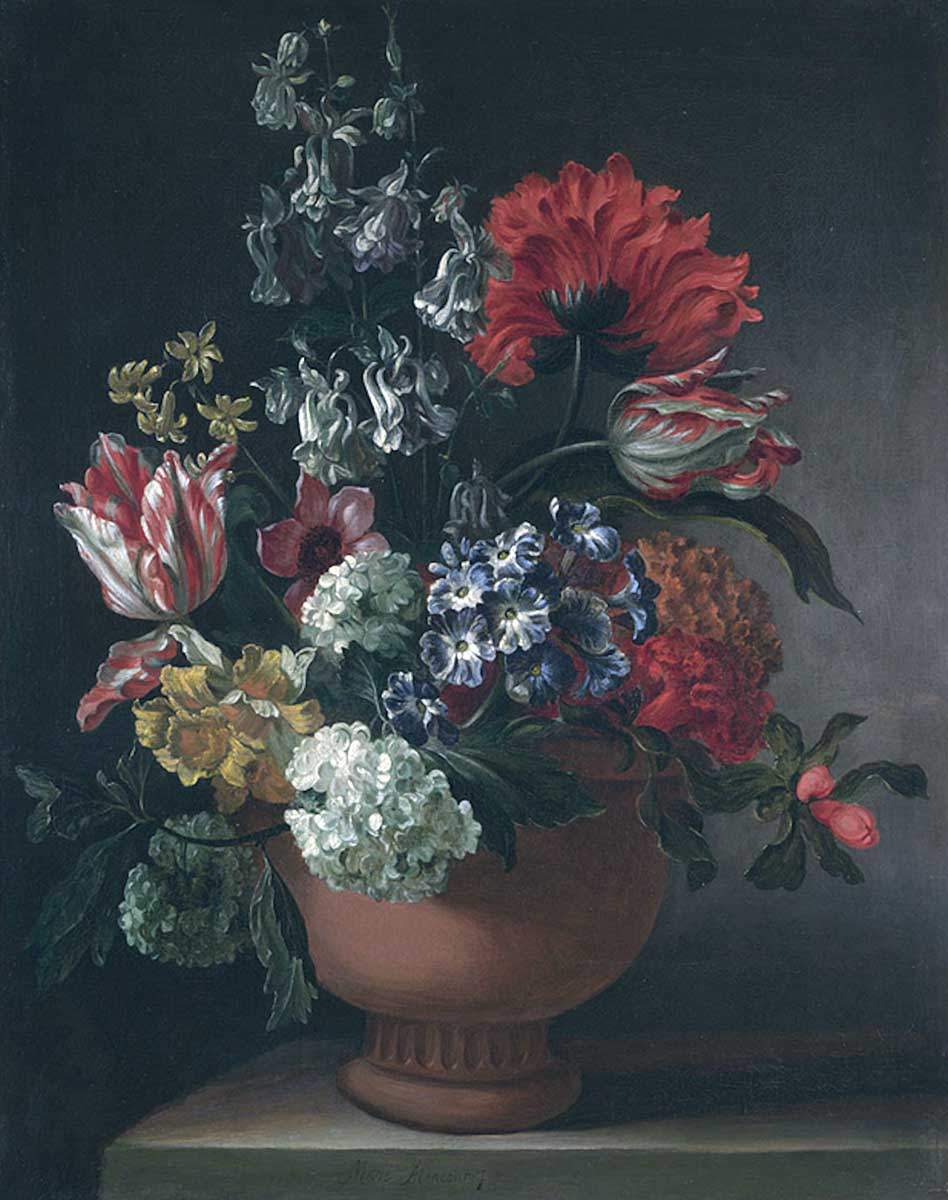
The mysterious Marie Blancour is only known by one painting, A Bowl of Flowers (1650s), which is held in the National Gallery collection. This signed work is the only recorded painting by the 17th-century French artist. The exact date of the painting is unknown, but it was possibly created in the 1650s. The bunch of flowers are displayed in a terracotta pot. The blooms have been chosen to create height and width in the bouquet and to show a palette of different colors. Many of the flowers are shown in their final stages, fully open in bloom.
Individual species had symbolic meanings in the 17th century. Tulips symbolized desire, anemones had a religious significance, and narcissi represented the dangers of self-absorption. Whether Blancour intended to convey a message with her choice of flowers, or whether they were simply meant to be enjoyed as decorative objects, is unclear.
7. Artemisia Gentileschi
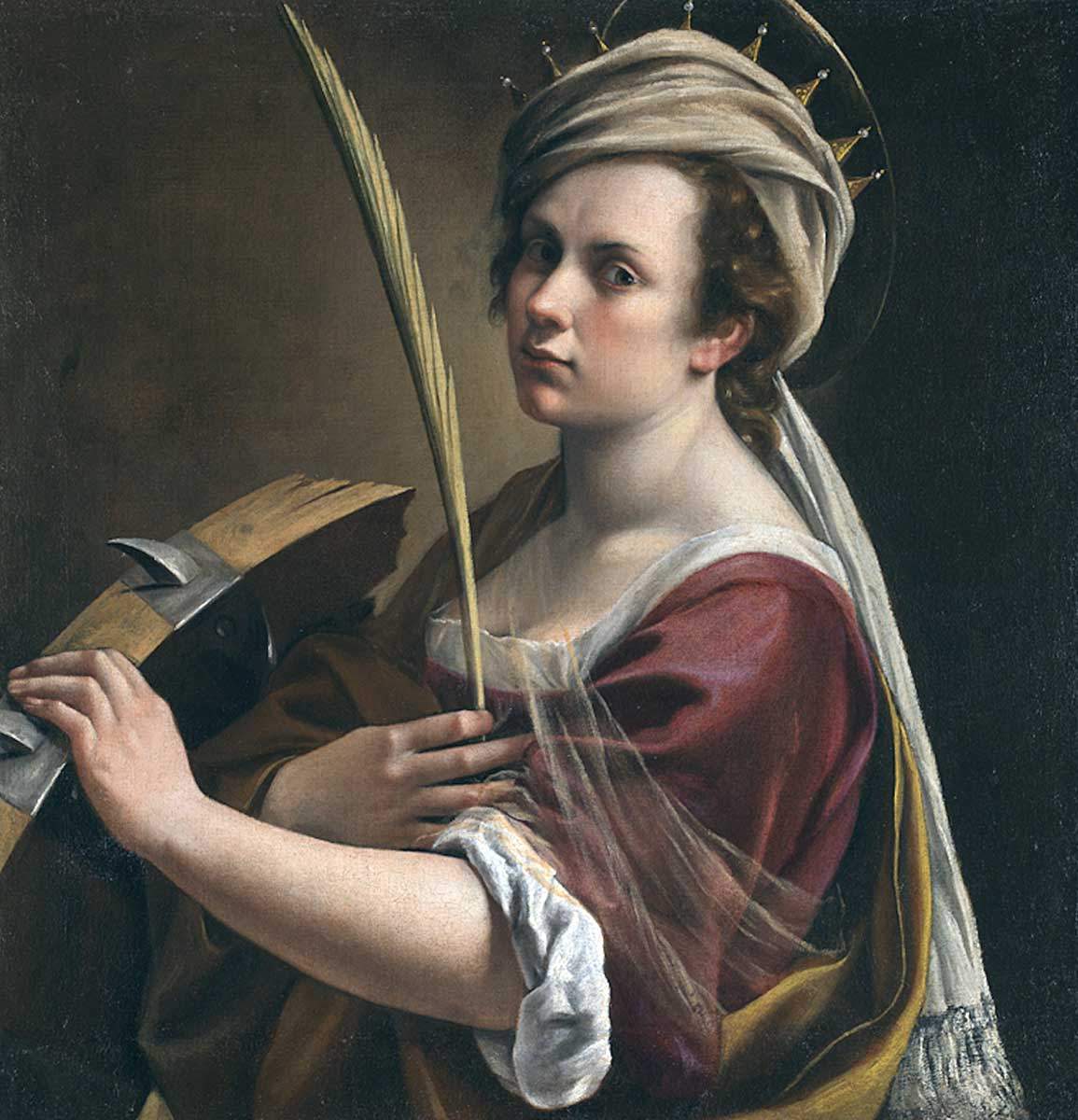
Artemisia Gentileschi’s talent and success is often overshadowed by the details of her private life. Born in 1593 in Rome, she was the daughter of the painter Orazio Gentileschi. Trained alongside her brothers, Artemisia proved to be the most talented of the Gentileschi children. At 17, Artemisia was raped by the painter Agostino Tassi and was subsequently subjected to a grueling trial, that included her being tortured. It is for this story that she is most well-known, but Artemisia is also famed for her exceptional talent. However, her art has always been seen in the context of the rape she endured.
In particular, her personal story is frequently analyzed when examining her works that depict scenes of strong women overcoming men, as seen in her rendition of the tale of Judith beheading Holofernes. Despite her ordeal, Artemisa became a hugely successful artist and in 1616 became the first woman admitted to the Academy of the Arts of Drawing in Florence. She established a workshop and was highly sought after in Rome, Florence, and Naples.
In 2018, the National Gallery acquired Artemisia’s Self-Portrait as Saint Catherine of Alexandria, a significant addition to the Gallery’s holdings of paintings by women artists. In the self-portrait, painted around 1615-17, Artemisia depicts herself as the martyred 4th-century Saint Catherine of Alexandria. Catherine, who was sentenced to death and bound to a wheel studded with spikes, was saved through divine intervention. A broken wheel became the Saint’s attribute in art. With her self-portrait, Artemisia connects herself with the Saint, determined and empowered after her torture.
8. Berthe Morisot: A Female Impressionist in the National Gallery

Born in 1841, Berthe Morisot was a French artist who worked in Paris during a time of great flourishing of modern art. She is one of the most successful female Impressionists. Morisot was a pupil of Jean-Baptiste-Camille Corot. In 1874, she married Eugène Manet, brother of the famous Edouard Manet. In the same year, she exhibited her work in the first Impressionist exhibition. Morisot’s works often faced criticism for their seemingly unfinished appearance, a sentiment shared by fellow artist Edgar Degas. Others praised her subtlety and delicacy, and her brother-in-law Manet recognized her distinctive technique. Summer’s Day (1879) was exhibited at the fifth Impressionist exhibition in 1880, likely under the title The Lake in the Bois de Boulogne. The scene of middle-class women at leisure is typical of the type of image that characterizes Impressionism.
This post was originally published on this site be sure to check out more of their content




